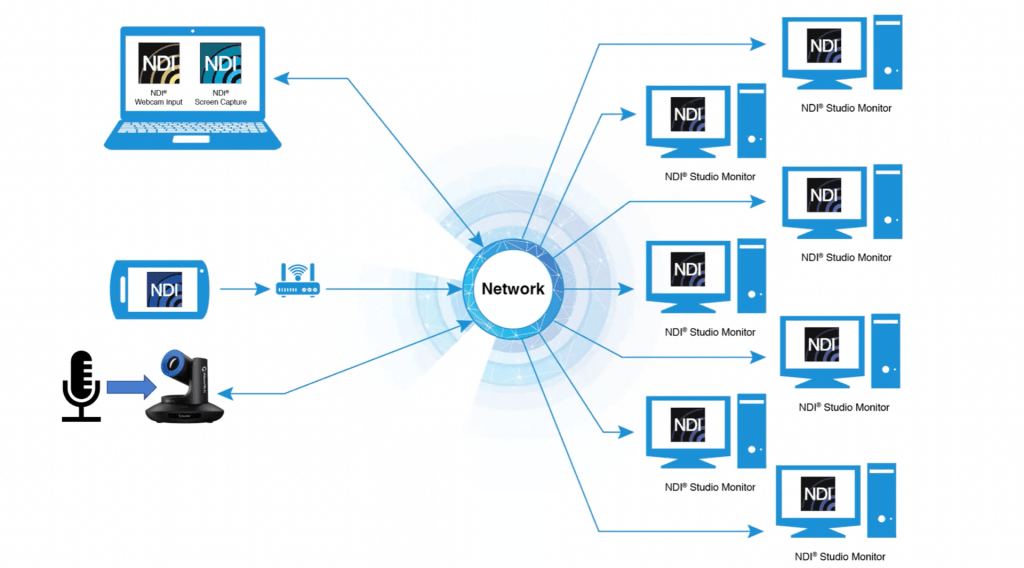How can Pace create professional video of diverse teaching, learning, and research activities for students on both campuses and online? One strategy could be developing our tools for remote production.

I recently attended NewTek’s “Enrich Flex/Hybrid Learning” event on emerging broadcasting possibilities powered by AV-over-IP technology. The event covered the following:
Learn how the IP-based lecture capture and micro-broadcasting services connect any room on campus or any meeting room in the business to anywhere in the world. Easy to implement and fully autonomous, CaptureCast a ground-breaking multi-input, multi-room recording and live streaming technology drives active participation, engagement, and experience for remote and hybrid learning.
We currently use NewTek’s TriCaster system in the OLC for capturing, recording, and broadcasting events to Zoom. But NewTek offers other equipment and software (e.g., CaptureCast) that can go further, and help us expand video services to the Pleasantville campus (and beyond!) in interesting ways.
A highlight of the session for me was reflecting on ways that “networked video production” (NVP… my coinage?) is different from other software-driven solutions. Zoom, for example, is organized around the idea of the host running the show. An NVP environment allows much more flexibility for live production with multiple streams.
The end result can be a single stream of content or multiple resources (e.g., different camera views, audio tracks, etc.). NVP can be made incredibly efficient or very sophisticated, and inspires me to think about different ways to package course content for different audiences.
What kind of materials could we create if we had multi-camera set-ups in Pace classrooms? How can a video-driven asynchronous experience be different than the live one?
